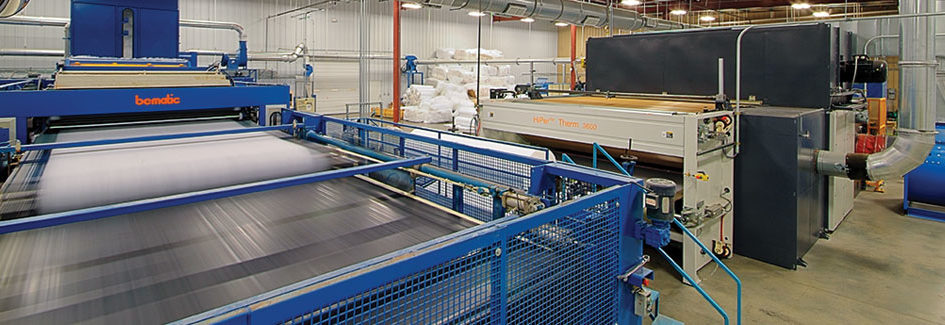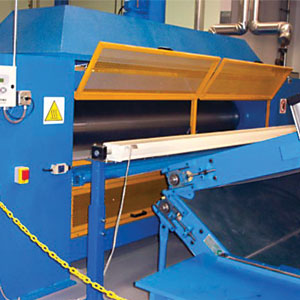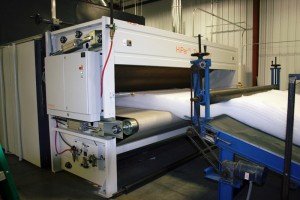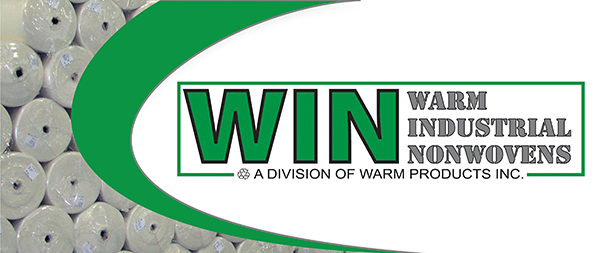
Hot Calendaring and Through Air Thermal Bonding
 Calendar
Calendar
Ideal for thin nonwovens, WIN’s calendaring lines offer the ability to produce a variety of nonwovens with texture, soft on both sides, rigid and even soft on one side and rigid on the other! The selected base fiber* is blended with bi-component fiber**, carded and layered to the desired weight in WIN’s state of the art automated manufacturing line. Next, pressure and heat combine between two cylinders melting the exterior of the bi-component fibers producing the finished nonwoven. Using WIN’s etched roller creates a cross hatch pattern if desired. Widths of up to 130″ with inline slitting available. Perfect for medical applications, furniture, bedding, construction, geotech and much more.
 Through Air
Through Air
WIN’s through air thermal bonding is available at both the Hendersonville, North Carolina and Elma, Washington facilities. WIN’s compression batt ovens ensure the specified loft is consistent throughout. Like the calendar method this process uses bi-component fiber blended with up to 5 more fibers to create nonwovens with a 1/2″ to 6″ loft and widths up to 130″. The hot air is forced through the fibers and recirculated. This ensures all of the bi-component fibers have been melted throughout the entire thickness producing a solid, stable nonwoven. The finished product can be light and airy for cushion wrap or rigid and firm for mattress pads. The highly densified polyester is often a replacement for urethane foam as it is a fraction of the cost while offering all the benefits:
- Shift Resistant – Ideal for Indoor & Outdoor Cushions
- Resilient – Perfect for Bench, Swings, Lounge Furniture
- Maintains Shape
- Cuts Easily – Easy to Work With
- Won’t Yellow or Deteriorate
- Dries Quickly – Won’t Mold
WIN’s Thermal Bonding lines on both coasts offer maximum throughput ensuring the best possible pricing with the ability to custom cut inline and ensure precise loft. WIN currently manufactures thermally bonded nonwovens for furniture and upholstery, insulation, acoustic insulation, top of the bed and mattresses.
*the base fiber could be polyester, polypropylene, acrylic, PVA, rayon, cotton or wool
**bi-component fiber consists of a solid polyester core with an exterior engineered to melt when exposed to heat allowing it to attach many fibers together. When cooled, a permanent bond is achieved.

Comments are closed, but trackbacks and pingbacks are open.